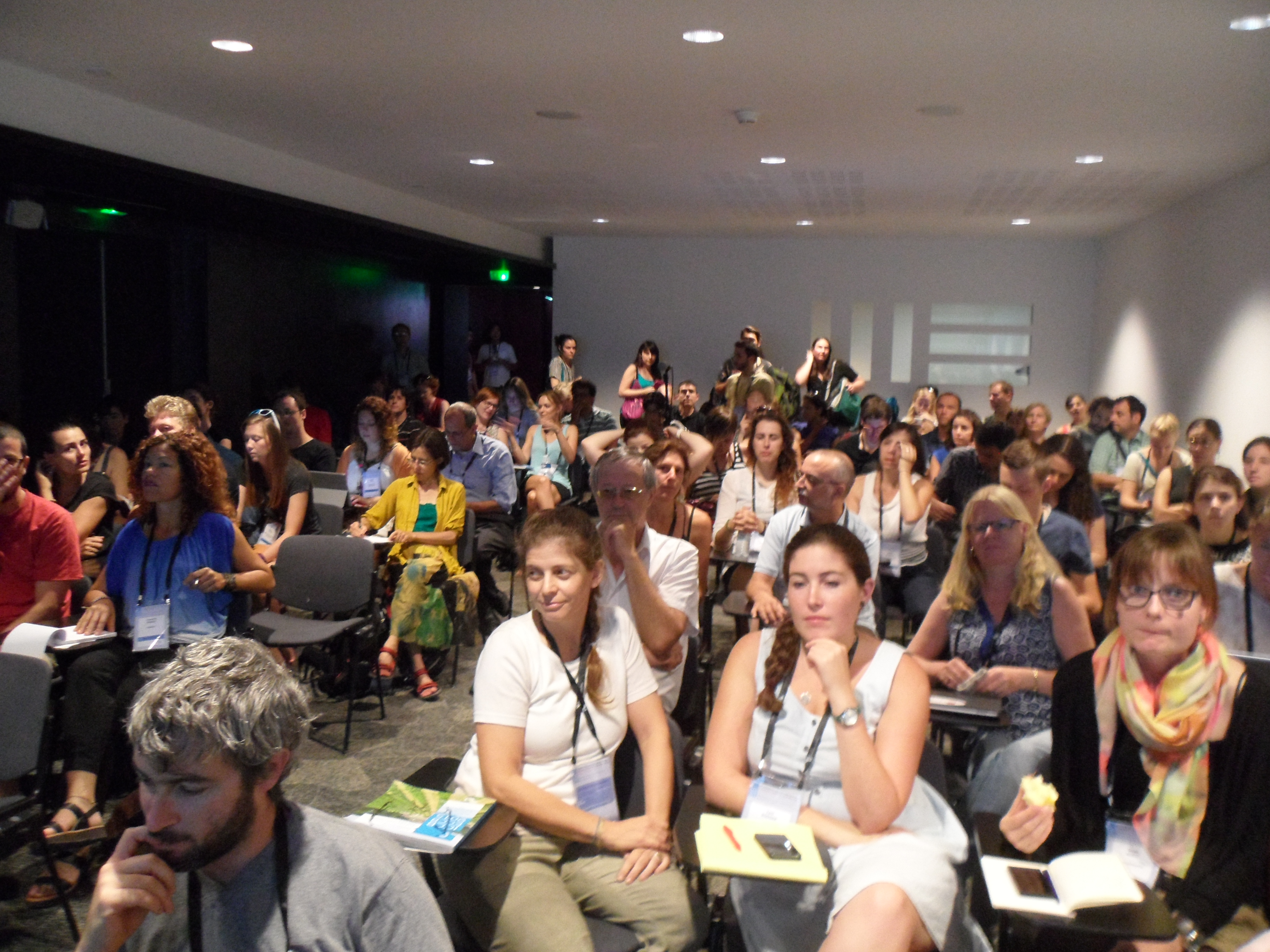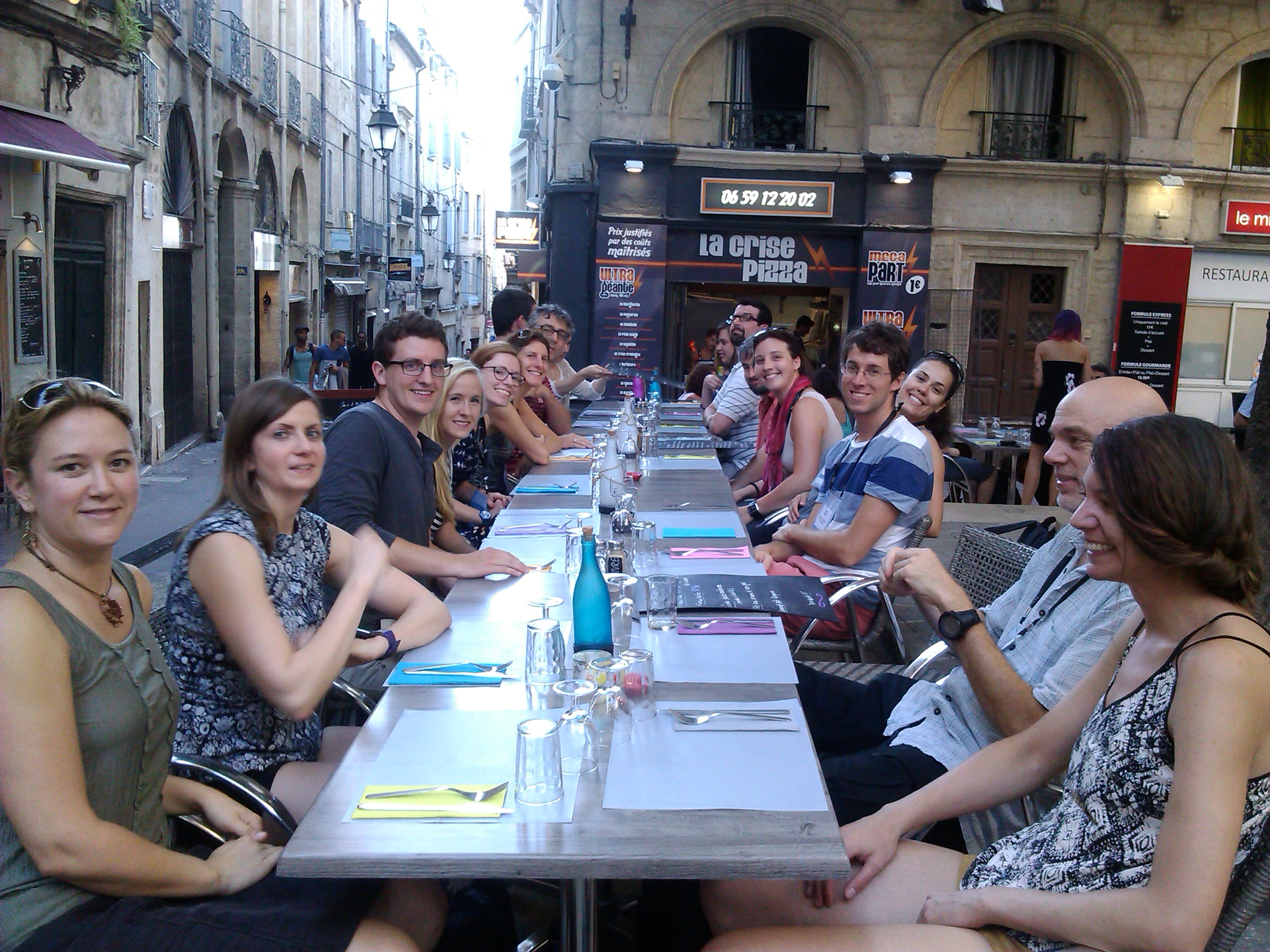By Gernot Segelbacher and Sean Hoban
There are numerous ways genetic data are now used in conservation biology for both research projects and active conservation management. Genetic data can often provide information which would otherwise be difficult to obtain: to document a species' demography, ecology and behavior more precisely; to understand how diversity can drive ecosystem function; to detect invasive species; and to solve illegal wildlife and plant trade (for more examples, see Frankham 2010). Using genetic data is becoming more and more commonplace, as it is cheaper and easier to generate abundant genetic data, computational tools are accessible and powerful, and geneticists are partnering with conservation biologists to help plan and implement conservation genetics work (such as the ConGRESS network).
Gernot Segelbacher and Sean Hoban, of the IUCN Conservation Genetics Specialist Group, hosted a Round Table workshop at ICCB 2015 in Montpellier to facilitate discussion on how genetic tools can be used in conservation ‘in practice’, specifically targeted for a mixed audience- those with and without genetic backgrounds. The round table was well attended with about 70 people discussing and interacting (see photo). Additionally, at ICCB there were 6 dedicated symposia on conservation genetics, more than 20 additional talks in other symposia and over 50 posters. It was clear from all this that conservation genetic data and tools now gain more and more importance in many aspects of conservation science and practice!
|
A full house with persons standing in the back for our opening lightening talks, before breaking into small discussion groups. |
What are conservation biologists looking to use genetics for?
Many attendees were interested in using genetics for practical on-the-ground techniques such as environmental DNA and species' detection; DNA barcoding to help solve criminal trade in lumber and wildlife; and making crops and forestry species more resilient by identifying genes of resistance to pests. Representatives from zoos and botanic gardens want to better manage the health of their ex situ populations, and conservation planners want to incorporate genetic data in Red List Assessments and choice of Key Biodiversity Areas. In addition ecologists are interested in using genetic data to better understand species' mating and dispersal behavior (often hard to observe with traditional non-genetic means!) and to understand how genetic variation in foundation species, and phylogenetic diversity, can effect ecosystem stability and functioning. Researchers often are interested in clarifying species' boundaries for endangered species’ legal policy or building phylogenetic trees for ranking priorities for conservation action. Lastly there was high interest in genetics as one of the three components of biodiversity recognized by the Convention on Biological Diversity- how do we protect and monitor changes in genetic variation locally and globally?
|
We held a networking dinner for mostly younger researchers from diverse countries to meet and share ideas and contacts. |
Now we highlight four areas in which participants discussed in detail how genetic tools play a major role in conservation, inspired by four short “lightening talks” by speakers from four continents:
- Jeremie Fant, from Chicago Botanic Garden, USA, explained the reasons behind the 'local is best' paradigm for seed transfer and restoration. He also discussed why such principles may not be sound policy for endangered, disjunct, and small populations- local is not always best. Follow-on group discussions revealed that ‘local is best’ paradigm is viewed by practitioners as a risk-averse policy, but ‘local’ is rarely well-defined and the appropriate geographic scale of ‘local’ can vary dramatically depending on the species. Moreover, using only local seed sources can promote inbreeding. Common gardens and genetic analysis can reveal where seed should be sourced from.
- Joachim Mergeay, of the Belgian Research Institute for Nature and Forest Genetics, talked about genetic criteria for the Favorable Conservation Status in the European Union Habitats Directive. Many people are interested in how genetic data may be correlated to other measures of populations and habitats. Conclusions were that there is a need for strong a priori sampling design in conservation genetics, and careful choice and clear explanation of the statistics being used to summarize genetic status- partnerships between geneticists, statisticians, bioinformaticians and ecologists are very valuable! Lastly there is hope for developing minimum habitat area requirements for ensuring stable genetic metapopulations.
- Jennifer Pierson, from the School of Environment and Society, Australian National University, explained how to interpret genetic-based estimates of effective population size and emphasized repeated estimates to make conclusions about declining or recovering population. Here we discussed a need for repeated sampling of a population to come to clear conclusions about effective population size, and thus the value of long term monitoring of demography and genetics, though this is rare! It was also mentioned that the relationship between environmental DNA and species’ presence is complex and highly influenced by the environmental conditions.
- Lastly, Antoinette Kotze, of the National Zoologic Gardens, South Africa, talked about linking studbooks and other information on captive individuals to DNA profiles to help identify and prosecute illegal trade. It was made clear that standardized DNA barcoding, and careful sampling and curation, do take substantial time and money investment but are a necessary resource for combating illegal trade in flora and fauna, a resource that is useful for a long time. It was also mentioned that further training on basic genetic concepts for ecology and forestry students is needed.
Thus the workshop and other contributions through the ICCB provided enough brainfood for lots of intense discussions, new contacts and collaborations (see picture of our young investigators networking dinner in Montpelier!). We thank the attendees and ICCB for the opportunity to discuss conservation genetic matters during the Round Table. Anyone interested in a full documentation of notes from our Round Table can contact Sean Hoban (shoban@utk.edu).

